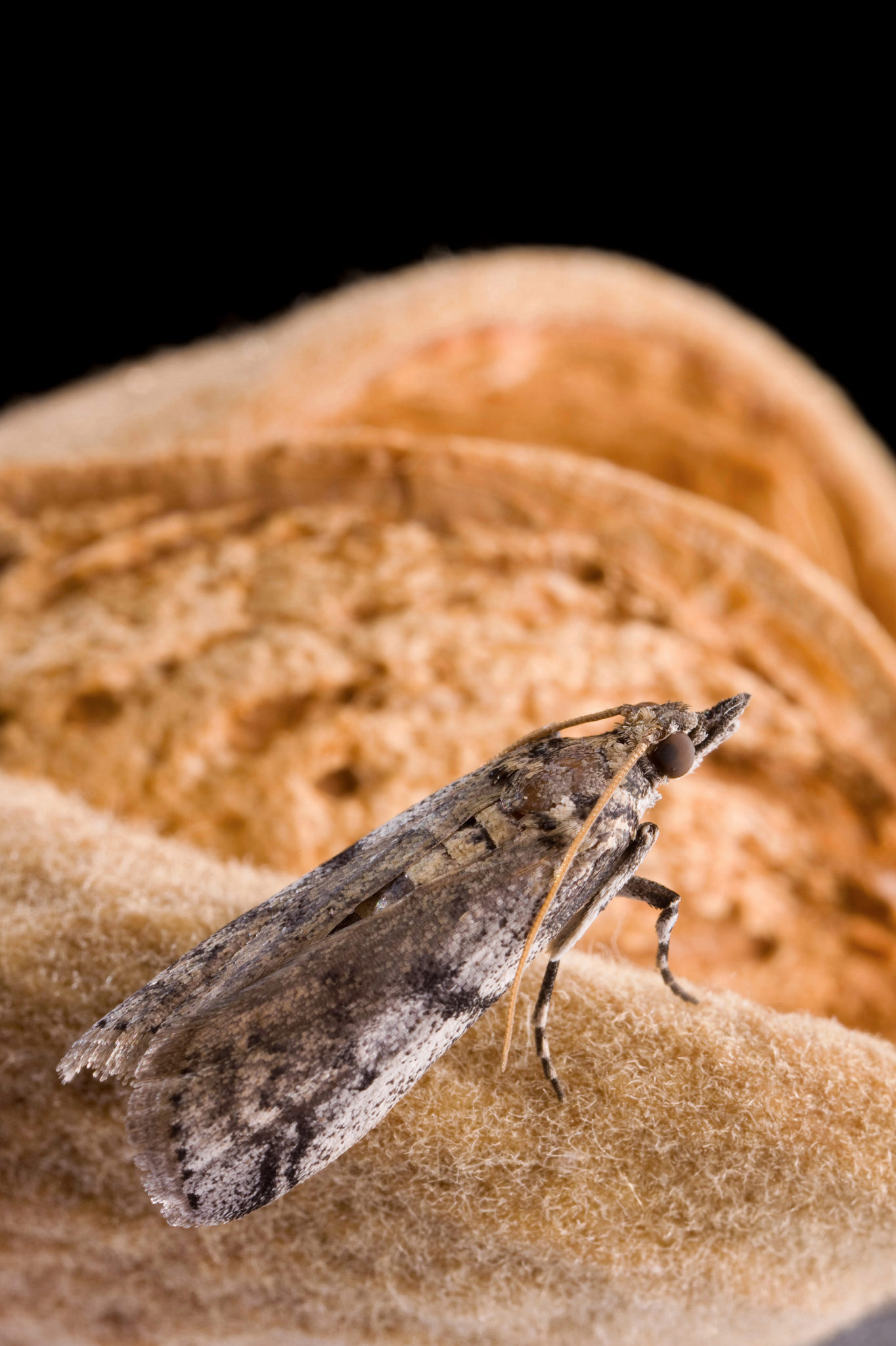
Improvements in handling and releasing sterile navel orangeworm moths are in the works for the sterile insect technique program funded by the California Pistachio Research Board and Almond Board of California.
The project, aimed at area-wide suppression of navel orangeworm, uses aerial releases of sterilized NOW to overwhelm wild populations of NOW and lower reproduction rates for this insect pest. When a sterile moth mates with a wild moth, no viable offspring are produced. Mass-rearing and irradiation of NOW is carried out by USDA-APHIS in a facility located in Phoenix, Ariz., that was initially developed for another moth pest, the pink bollworm. With the eradication of pink bollworm in 2018, efforts were initiated by the pistachio industry to reconfigure the facility for NOW. Shortly thereafter, the almond industry joined in on these efforts as well.

The first releases of sterile NOW began in 2018 as part of a logistical exercise to work out methods to deliver 750,000 sterilized moths at a time five to six times per week over approximately 2,000 acres of Kern County pistachio orchards. At the same time, weekly ground releases of approximately 6,000 moths began to take place in a small experimental block at the University of California Kearney Agricultural Research and Extension Center as part of an on-going research program led by Houston Wilson (UC Riverside Cooperative Extension Specialist) and Chuck Burks (USDA-ARS Research Entomologist). The sterile moths are distinguished from wild NOW by a red dye ingested at the mass rearing facility.
Today, Wilson and Burks continue to work on refining the sterile moth program. They are collecting performance data on sterile NOW and at the same time providing scientific input on broader program activities led by USDA-APHIS and the California Department of Food and Agriculture (CDFA).
Wilson said that any mass-rearing, sterilization and release program ultimately has to be tailored specifically to the target organism, and so their work to date has focused on figuring out the adjustments needed to adapt the USDA-APHIS facility to the needs of NOW.
Findings of their research over the past two years has led them to focus efforts in 2020 on mitigating cold damage during aggregation, storage and transport as well as improving the moth release mechanism. They are also looking at the use of x-rays to sterilize moths, which may have fewer impacts on moth performance relative to the current gamma irradiation.
Two years ago, initial releases of sterile NOW yielded low recovery, and so Wilson and Burks began to look at the many variables that could affect sterile moth ability to disperse and locate wild females. Initially, the irradiated moths rarely showed up in pheromone traps in the orchards or at mating tables used to measure moth mating activity after delivery via fixed-wing aircraft. On a positive note, their research in 2018 demonstrated that the sterile females are indeed capable of calling and attracting wild males.
As of this year, Wilson said they have concluded that the strain of moth being mass-reared at the USDA-APHIS facility and the radiation dose do not appear to dramatically affect their viability. Experiments with a flight mill and wind tunnel confirmed that the strain of moth being mass-reared has an adequate dispersal capacity and does respond to female pheromones.
Wilson said one area of focus this year is on evaluating NOW ability to recover from exposure to various levels of chilling, which is necessary to keep moths settled during irradiation and transport. Findings from these assays could then be used to modify conditions in the mass-rearing facility. The release mechanism is another area under investigation. Instead of releasing the sterile moths from a fixed-wing aircraft, Wilson said, they have found other methods seem to improve dispersal and recovery, and this year they will start to explore delivery of sterile moths via drone.
Bob Klein, manager of the California Pistachio Research Board, said CDFA has been providing some of the critical operations and field management needs for the NOW SIT program.










